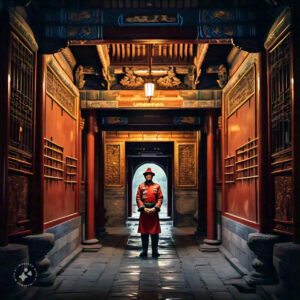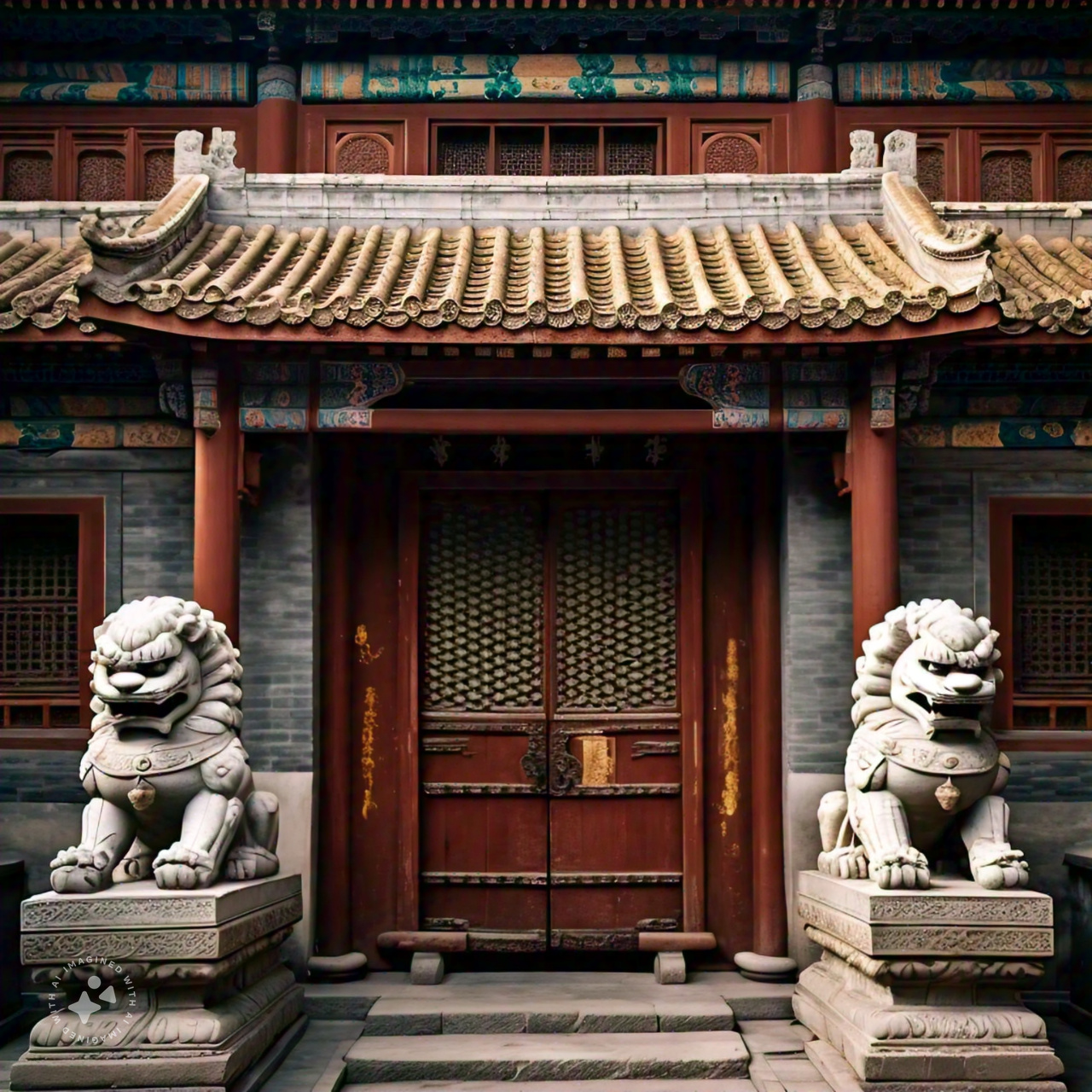China’s Forbidden City: An Examination of Imperial Cultural Heritage
Introduction
The Forbidden City, located in the heart of Beijing, is an iconic symbol of China’s rich cultural heritage. As the largest and most well-preserved imperial palace in the world, it represents the pinnacle of Chinese architecture and the epicenter of imperial power. This article delves into the history, significance, and preservation efforts of the Forbidden City, shedding light on its enduring cultural importance.
Historical Context: The Ming and Qing Dynasties
The Forbidden City was constructed during the Ming dynasty (1368-1644) and served as the imperial palace of 24 emperors across two dynasties. The palace’s layout, design, and architecture reflect the hierarchical structure of Chinese society. The Qing dynasty (1644-1912) further expanded and renovated the palace, incorporating Manchu and Tibetan influences.
Architectural Significance: A Masterpiece of Chinese Design
The Forbidden City’s architecture is a testament to Chinese design principles, blending harmony, balance, and symmetry. The palace’s layout is divided into three main sections: the outer, middle, and inner courts. The iconic Meridian Gate, Gate of Supreme Harmony, and Hall of Supreme Harmony are renowned for their grandeur and intricate details.
Cultural Significance: The Heart of Imperial China
The Forbidden City was the seat of imperial power, where emperors ruled China for nearly 500 years. The palace housed the imperial family, concubines, eunuchs, and officials, with strict hierarchical rules governing daily life. The Forbidden City also played host to elaborate ceremonies, rituals, and festivals.
Preservation Efforts: Protecting China’s Cultural Heritage
In 1987, the Forbidden City was declared a UNESCO World Heritage Site, recognizing its cultural and historical significance. The Chinese government has implemented measures to preserve the palace, including restoration projects, conservation efforts, and tourism management.
Challenges Facing Cultural Heritage Preservation
Despite preservation efforts, the Forbidden City faces challenges, including overcrowding, pollution, and funding constraints. Climate change and natural disasters also pose significant threats to the palace’s structural integrity.
Cultural Heritage Tourism: Balancing Preservation and Accessibility
The Forbidden City attracts millions of visitors annually, generating significant revenue for China’s cultural heritage tourism industry. However, tourism poses challenges for preservation, requiring careful management to ensure the palace’s integrity.
Community Engagement and Cultural Education
Community engagement and cultural education are crucial for promoting cultural heritage preservation. Initiatives, such as guided tours, workshops, and cultural festivals, enhance visitor experiences and foster appreciation for China’s imperial heritage.
Digital Preservation: Innovative Technologies
Digital preservation technologies, such as 3D scanning and virtual reality, aid in preserving the Forbidden City’s cultural heritage. These innovations provide immersive experiences, enhancing visitor engagement and accessibility.
International Cooperation: Collaborative Preservation Efforts
International cooperation plays a vital role in preserving cultural heritage. Collaborative projects, such as joint restoration initiatives and cultural exchange programs, promote cross-cultural understanding.
The Forbidden City’s Enduring Legacy
The Forbidden City’s cultural significance extends beyond China’s borders, influencing architectural designs globally. Its legacy serves as a testament to China’s rich cultural heritage.
Future Directions: Sustainable Preservation
Sustainable preservation strategies will ensure the Forbidden City’s long-term preservation. These strategies incorporate green technologies, community-led initiatives, and innovative funding models, ensuring a balance between preservation and accessibility. Additionally, sustainable preservation requires collaboration between government agencies, private organizations, and local communities. By adopting sustainable practices, the Forbidden City can maintain its cultural significance.
Cultural Heritage and National Identity
The Forbidden City’s cultural heritage is deeply intertwined with China’s national identity. This connection underscores the importance of preserving cultural heritage for future generations. The palace’s cultural significance extends beyond China’s borders, influencing international understanding of Chinese history. Furthermore, cultural heritage preservation promotes cross-cultural exchange.
The Role of Government in Cultural Preservation
Government support is crucial for cultural preservation. Effective policies and funding initiatives enable preservation efforts. Government agencies can provide resources, expertise, and infrastructure for preservation projects. Moreover, government-led initiatives can raise awareness about cultural heritage preservation.
Private Sector Involvement: Philanthropy and Sponsorship
Private sector involvement aids in preservation efforts through philanthropy and sponsorship. Collaborative partnerships between government and private sector stakeholders enhance preservation initiatives. Private organizations can provide funding, expertise, and resources for preservation projects. Additionally, corporate social responsibility initiatives can promote cultural heritage preservation.
Education and Awareness: Raising Cultural Consciousness
Education and awareness campaigns promote cultural consciousness, fostering appreciation for China’s imperial heritage. Educational programs and cultural events engage local communities. Cultural education initiatives can incorporate digital technologies, enhancing accessibility. Furthermore, community-led education programs ensure cultural heritage preservation.
Conclusion
The Forbidden City stands as an iconic symbol of China’s imperial cultural heritage, representing the country’s rich history, architectural grandeur, and cultural significance. Efforts to preserve this cultural treasure require careful balance between accessibility, preservation, and community engagement.
Additional Resources:
UNESCO. (1987). Forbidden City World Heritage Site.
National Palace Museum. (n.d.). Forbidden City History.
China Cultural Heritage Preservation Society. (n.d.). Preservation Efforts.
Related Article

